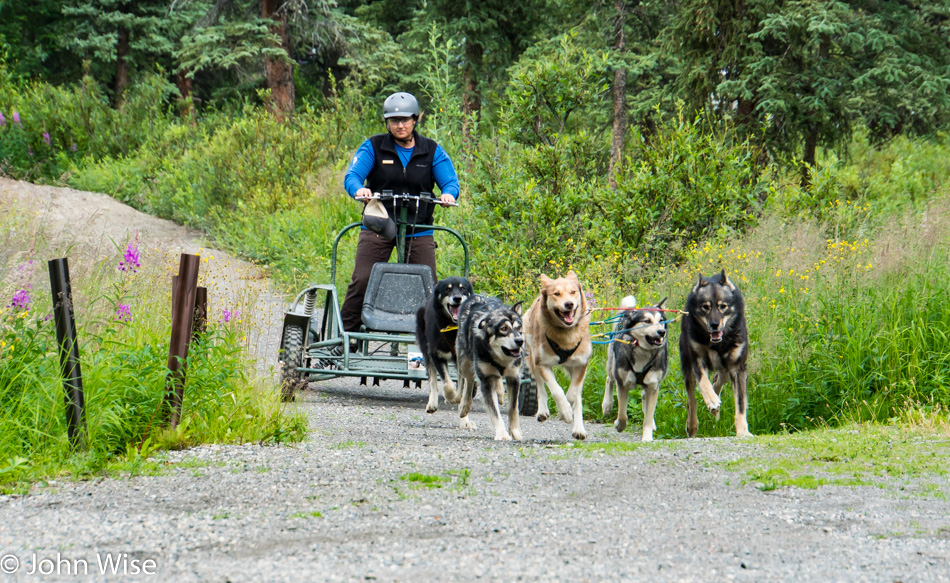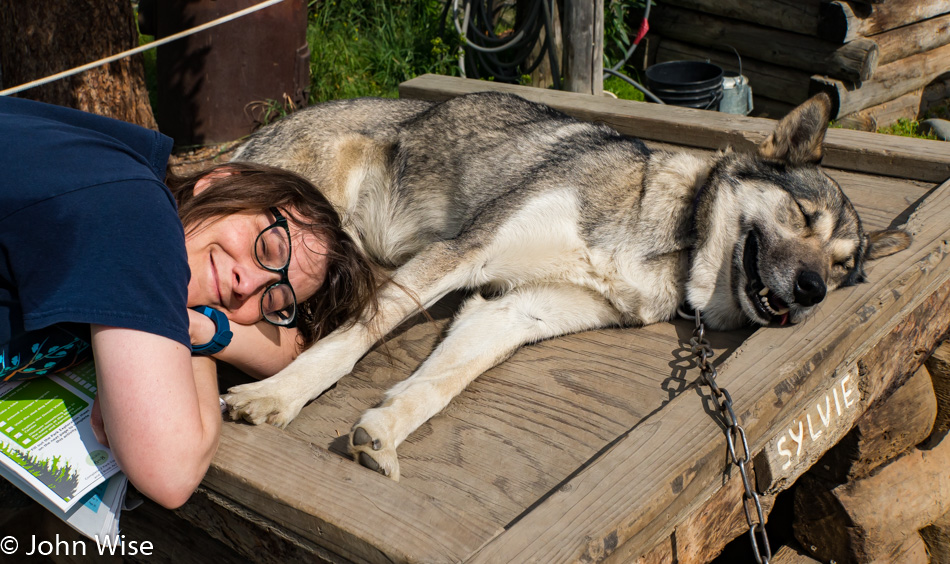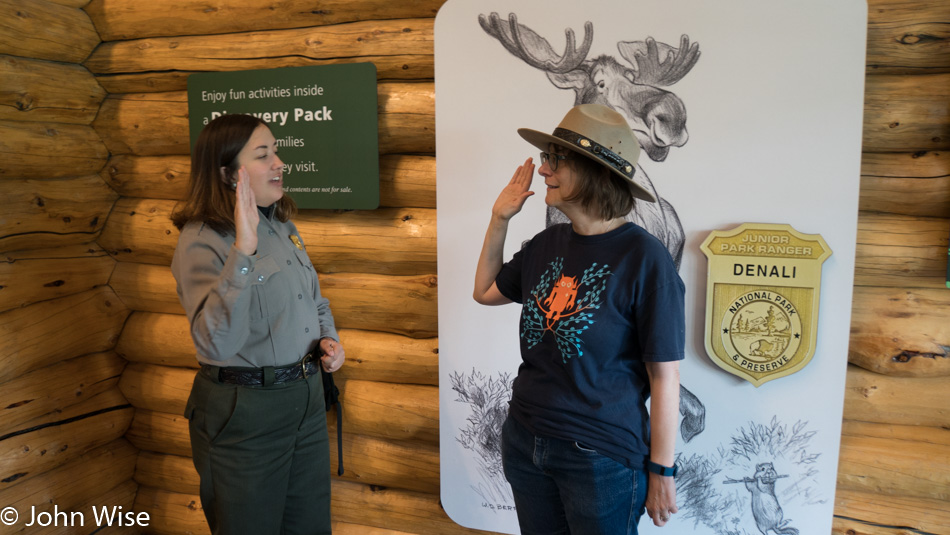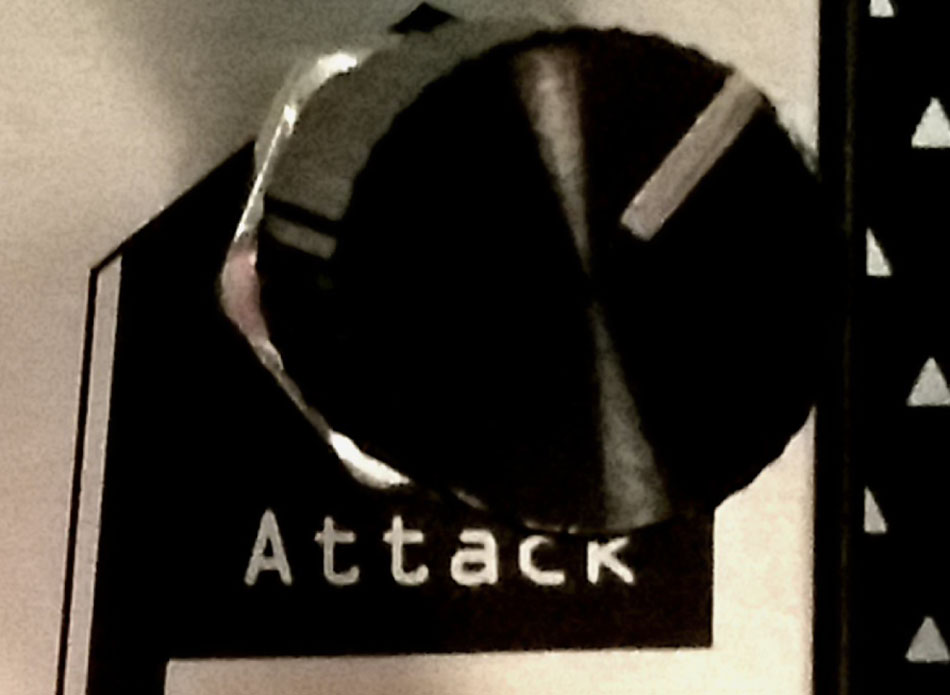
The first part of today’s travel was on a commercial jet that took us an hour and a half down the coast of Alaska from Anchorage to Juneau. When I booked our connecting flight with Alaska Seaplanes, I was excited that we’d be taking off on the water and making a water landing. Imagine my disappointment when we recognized that they also operate planes that take off and land on good old ground. Oh well, maybe another trip we’ll make certain beforehand that we’ll be doing the plane-on-water-thing, but for now, we crawl into our tiny 8-passenger plane for the short 30-minute flight from Juneau to Haines, Alaska.

Nothing like a hanging glacier peeking out of the clouds to quickly turn our frowns upside down. Seriously though, you saw the coastline in the photo above; there’s nothing to be disappointed with.

The milky water is a glacial runoff, joining this arm of the Inside Passage.

We didn’t spot any whales on our journey north, not that we were expecting to see them in the mountains, but right below us was ocean water, and when we weren’t looking at glaciers and forests, we were frantically scanning the water for cetaceans.

The nice thing about a single-engine propeller-driven plane is that it flies kind of slowly. When I was looking through our photos at home, I thought for a second that this glacier and the image four photos down were not the same places, but on closer examination, it turns out they are the same.

Then I had to do a double-take to realize that this and the photo two images up are not in the same place. The waterfalls and glaciers are just that abundant.

Thin braids of water running over the landscape remind me of what we’ll be running over on the Alsek River soon.

It’s been a delight lingering over the landscape and flying slow and low, allowing us to appreciate the sights. I am curious what this all looks like on a sunny day, but I’m impressed nonetheless.

Look closely and you’ll notice the similarities with the image four photos above.

A view from a plane we don’t often get to see, the runway straight ahead.
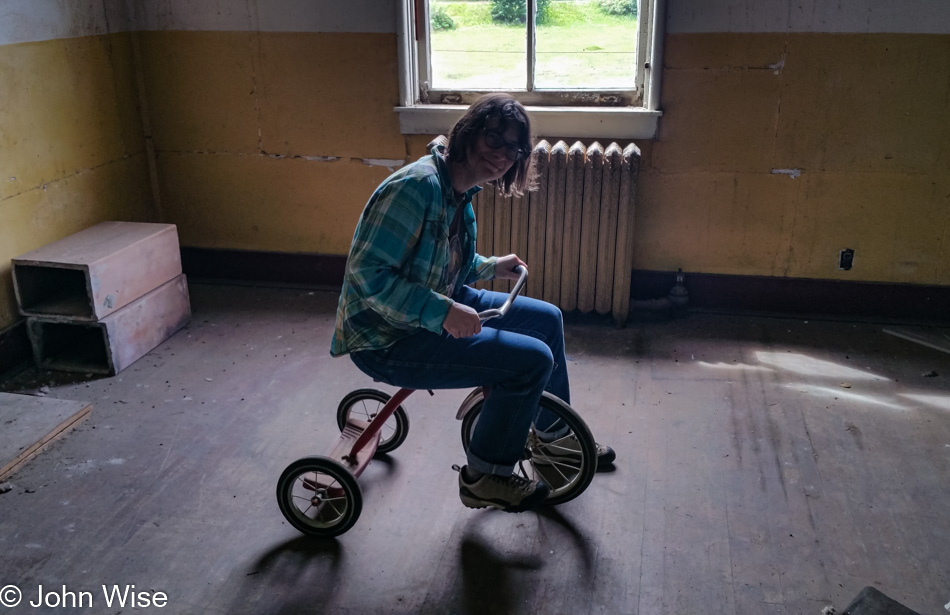
We are in Haines a couple of days early to allow ourselves time to explore the area. After checking in to our small hotel and picking up the rental car that we’ll have for about 24 hours we headed over to the staging area and warehouse where our boatmen were preparing things for our river trip. The building is falling apart; we looked into a couple of the abandoned rooms out of curiosity.

We didn’t need to drive far for our next adventure, and the nearby Chilkat State Park sounded appealing enough for us. While the park was only a couple of miles from our lodging, saving the hour and a half, it would have taken us to walk out and back offered us more time out on the trail.

We are on the Battery Point trail and moving along pretty slowly.

While we were in Alaska five years ago, running the Alsek River for the first time, we didn’t have much time to explore the surrounding areas. Being immersed in a glaciated river corridor has a special appeal, but so does the area outside of that.

No matter that we are in a state park, civilization as it is in Alaska hasn’t been successful in pushing wildlife to an extinction point near its towns like it has down the lower 48 and so I’m always on the alert for bears.

It’s great to wind down from the stress of normal life out in the middle of nowhere. By the way, it was just two weeks ago that I had to fire everyone in my company. Twenty-some people coming off the 4th of July long weekend were fired en masse because we ran out of money for the last time. This vacation was about the last thing I wanted to do, but we would have lost a ton of money canceling at the last minute as these kinds of adventures require that you cancel at least 90 days in advance. So here we are with my wounds still fresh. Being out here, though, I don’t want to dwell on that carnage and am trying to set my mind on spending time with my wife, friends, and myself. Enough said.

While we stop to smell the flowers, the butterflies stop to taste the flowers.

Even with overcast skies, it’s pretty out here and a beautiful contrast to the 110-degree temperatures we left behind in Phoenix, Arizona.

We know from previous experience that cascades are typically safe to drink from. This one even had a pipe at its base, which suggested the other end was higher up, capturing the water before it got close to the road, so we had to stop and fill our bottle. I’m still astonished by the opportunity to drink “wild” water.

We did not transition from drinking to eating, at least not these.

Our lodging for the night is at the Halsingland Hotel, which had a special rate for everyone in our group; it’s also where we’ll all have dinner and an orientation meeting tomorrow. For now, we have nothing much to do but take in the sights and stand in awe that we are here.

















